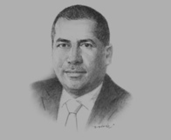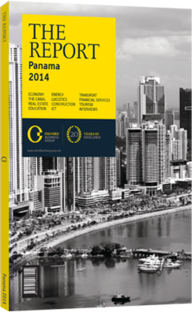OBG talks to Fernando Marciscano, General Manager, Empresa de Transmisión Eléctrica Panameña (ETESA)

Interview: Fernando Marciscano
What is Panama’s overall strategy to achieve power self-sufficiency?
FERNANDO MARCISCANO: In 2012, Panama’s installed capacity was 2200 MW, which allowed it to meet overall demand. To address the growing need for electricity (which increases 7% annually, on average), the government has attempted to foster greater power generation capacity through modernisation and development of new power facilities. As part of this effort, the government has emphasised hydroelectricity, with the construction of new hydroelectric projects expected to generate an additional 300 MW by 2014.
However, since hydro-electricity relies heavily on seasonal rainfall, which causes uncertainty, the government has been looking to develop new power generation alternatives and has put in place a more open policy. One project in this effort is the implementation of a new wind farm in the Penonome area, the biggest in Central America. It is expected to produce 120 MW by 2014. However, it will have an installed capacity of 220 MW. We also have a tender offer for a gas-based power generation project expected to produce at least 400 MW in the long term. This investment in the power generation segment has been accompanied by a long-term modernisation plan for the power transmission system, which includes the acquisition of up-to-date equipment that will improve reliability and security Will diversifying power generation technologies lead to increased competitiveness?
MARCISCANO: Our current energy matrix still relies on outdated diesel-intensive thermal plants with high operational costs, resulting in elevated electricity bills for consumers and industries. This has a negative impact on the competitiveness of the country as a whole. Since 2009, ETESA has been in charge of purchasing electricity for distribution companies. In this new business model, ETESA has full room to manoeuvre, providing the overall energy matrix through a selective technology-based power generation tender bids; we can choose among the candidate companies, picking the ones that provide the best offer to us, therefore improving the overall price of electricity.
More affordable electricity will provide another competitive edge for Panama as a hub for logistics and banking. We also have a tender bid underway for a 15-year electricity distribution concession with a set of conditions aimed at fostering increased competitiveness in the power distribution segment and allowing for unconnected remote areas to get access to power.
How will the extension of power transmission into remote areas affect developing industries?
MARCISCANO: According to our five-year development plan, we will extend a high voltage energy transmission network to remote areas. This plan follows to previous studies carried out by the former Hydroelectric Resources and Electrification Institute; it gauges not only the feasibility of development projects but also the expected profitability for the distribution companies. Access to power is a crucial growth factor for these regions, since it can further development in other important sectors such as agriculture and tourism.
The power transmission extension has had a positive effect on local economies, creating jobs and fostering investment opportunities. Now, the government is also looking to develop interconnectivity with our neighbours. Panama already has three interconnection points with Costa Rica for electricity exchanges, which allow both countries to supply each other in exceptional circumstances, such as outages. In addition, the government is committed to developing the Panama-Colombia power interconnection line, a project which is currently undergoing a feasibility study. If approved and completed, this project will allow the two countries to transmit electricity to each other by 2017.
This is particularly important for power generators in Panama, because once our power generation expansion plan is completed, we will be able to export excess electricity to Colombia, a market full of opportunities.
You have reached the limit of premium articles you can view for free.
Choose from the options below to purchase print or digital editions of our Reports. You can also purchase a website subscription giving you unlimited access to all of our Reports online for 12 months.
If you have already purchased this Report or have a website subscription, please login to continue.

